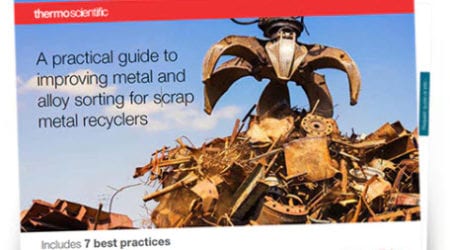
Ruins of Ancient Malia Palace, one of the palaces of Minoan Crete
Ancient gold rings, among other treasures, were discovered in the tomb of a Bronze Age warrior near Pylos, on the southwest coast of Greece. Other ancient metal discoveries discussed in this blog include 39 ingots of orichalcum, a metal believed by some to have originated in Atlantis (Read From Fiction to Fact: Ancient Metal Identified with XRF) as well as a a dagger found in King Tut’s tomb.
Both the ingots and the dagger were analyzed with X-ray fluorescence (XRF), a nondestructive analytical technique used to determine the elemental composition of materials. XRF analyzers measure the fluorescent (or secondary) X-ray emitted from a sample when it is excited by a primary X-ray source. Each of the elements present in a sample produces a set of characteristic fluorescent X-rays, or fingerprint, that is unique for that specific element, providing conclusive qualitative and quantitative analysis of material composition. XRF analysis determined the coins were 75-80% copper, 15-20% zinc, and small percentages of nickel, lead and iron. The dagger was found to be made of of iron, nickel and cobalt, with a chemical composition suggesting the metal came from a meteorite (Read The Mystery of King Tut’s Dagger Solved with XRF).
According to UC Magazine, the four gold signet rings found in the warrior’s tomb provide valuable insights into the origins of Greek civilization. The rings are crafted from multiple sheets of gold and feature iconographical references seen elsewhere in Minoan art and religious culture. Many of the artifacts found in the warrior’s grave were made by Minoans, a culturally dominant civilization to the Mycenaeans that arose on Crete, southeast of Pylos. The University of Cincinnati researchers responsible for the find consider the rings to be one of the best examples of this Mycenaean-Minoan cultural transfer. As far as we know, the rings found in the warrior’s tomb haven’t been analyzed with XRF, but as we’ve seen with the examples of the ingots and Tut’s dagger, XRF is certainly an appropriate technique for such artifacts, not only for its analytical precision but most importantly, because it is nondestructive and will not damage such precious objects.
High power wavelength dispersive X-ray fluorescence (WDXRF) is one of the primary methods for quality control in gold analysis. Read the application note describing the results of precision tests conducted on gold alloys using a WDXRF instrument.
To learn more about XRF technology and its many applications, check out our two eBooks on the subject:






Leave a Reply